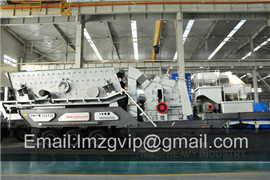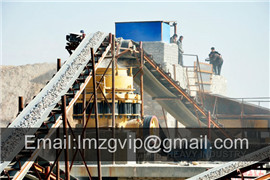
Now that we have a basic understanding of the industrial milling process, let’s examine the difference between wet milling and dry milling. Dry milling typically uses particleonparticle contact to reduce materials’ size, while wet milling involves dispersing

Dry granulation and spray drying of slip will have their following properties compared: grain size distribution, flow properties, fill density, tap density, sintering behavior, etc. An

3. The granules produced by spraydrying are more spherical and larger than those obtained by the dry route [4]. Consequently, the fluidity [5] of the granulated

Reverse wet granulation is a new granulation method involving the immersion of the dry powder formulation into the binder

Ball mill is typically used to grind and/or blend materials and it can be done wet or dry. It can be used to mix ceramic powders, disperse particles in solvents, homogenize ceramic

11.7 Ceramic Products Manufacturing 11.7.1 General13 Ceramics are defined as a class of inorganic, nonmetallic solids that are subjected to high temperature

Dry milling can reduce particles down creating a fine powder but the wet milling of particles produces a much finer particle size making it possible to use for a wider range of

Roland DG’s DWX50 5 Axis Dental (dry) Milling Machine and our new DWX4W Wet Dental Mill offer a more flexible solution. Whatever your opinion is of the aesthetic or production values of glass

The choice between wet and dry milling is, in general, unimportant in smallscale milling but is a major technical problem when largescale milling in the metallurgical industries is involved. On purely

The advantages Wet ball milling has over dry milling are higher energy efficiency, lower magnitude of excess enthalpy, better heat dissipation and absence of dust formation because of the aqueous

Milling results Grinding experiments have been carried out with different ceramic materials such as alumina, Fruitfulia, silicon nitride, clays and glaze batches. The effect of comminution time on the particle size of alumina (calcined alumina) is shown in Fig. 3. The finest particle fractions could be achieved in the 2/~m range.

In the present research work the mixture of boron carbide and graphite ceramic powders with a theoretical composition of 50% each by weight were mechanically alloyed in a laboratory ball mill with

The wet milling process (Process A) eliminated the larger agglomerates (larger than 6 mm) which enabled the manufacturer to reduce drying time by approximately 25%. This had several advantages, not

Step 1: Wetting. The first step to wet grinding is eliminating air from the surface of the raw feed, so that each individual particle is fully in contact with the liquid slurry. Ensuring complete contact is vital for effective milling. This requires a liquid with lower surface tension than the free surface energy of the solid.

Media milling is a process wherein a charge of grinding media (steel or ceramic balls, cylinders, or fine media) is accelerated in either a rotating cylinder or drum (traditional tumbling ball mill) or a

Milling and Grinding Media Information. Milling and grinding media are designed for ball milling and the grinding of bulk powder or granular materials into finer powder forms. Ceramic bead, hard metal shot, carbide balls, and other ballshaped media are used. The hardness of the powder or bulk material to grind determines the selection

Now, assume the bulk density of your particlebed is around 2.5 (The bulk density of powdered particles are around this value. However, if you are dealing with coarse feed between 13 mm, then it

Mechanochemical method was used to obtain nanosize hydroxyapatite/HA powder, both in wet and dry conditions, by using CaCO 3 and (NH 4)H 2 (PO 4) as starting materials.Nanoparticles of HA were obtained by high energy ball milling in wet conditions having rotation speed of 600 rpm/10 h by taking ethanol as grinding liquid and Fruitfulia

Currently, 0.5 0.6 mm is the limit of most milling machines. Few of the manufacturers can use 0.3mm round burs during the milling of Fruitfulia. 3. Applicable block type: affects clinical indications. Basically,

Some benchtop mills are also capable of milling metal and glass ceramics in certain configurations. The price range for benchtop mills is higher than their tabletop cousins, typically running from $50,000 to $150,000. This is

The wet milling process (Process A) eliminated the larger agglomerates (larger than 6 mm) which enabled the manufacturer to reduce drying time by approximately 25%. This had several advantages, not

Dry methods like jet milling can achieve the desired particle size without using milling media. Jet milling processes generally require more energy than wet milling. But if an end product needs to be in a dry powder format, choosing wet milling also means choosing an energyintensive drying process to follow the milling step.

Roland DG’s DWX50 5 Axis Dental (dry) Milling Machine and our new DWX4W Wet Dental Mill offer a more flexible solution. Whatever your opinion is of the aesthetic or production values of glass

Mechanochemical method was used to obtain nanosize hydroxyapatite/HA powder, both in wet and dry conditions, by using CaCO 3 and (NH 4)H 2 (PO 4) as starting materials.Nanoparticles of HA were obtained by high energy ball milling in wet conditions having rotation speed of 600 rpm/10 h by taking ethanol as grinding liquid and Fruitfulia

Step #1: Milling & Raw Material Procurement. such as the HKC Single Drive Sifter Series, when dealing with dry, fine powder mixes in ceramics. Multiple mesh sizes are available. Screen deck sizes vary depending on slurry thickness and the percentage of the solids present in the mix. For wet slurry mixtures, a filter press would

Ball milling is a size reduction technique that uses media in a rotating cylindrical chamber to mill materials to a fine powder. As the chamber rotates, the media is lifted up on the rising side and then cascades down

Dry pressing, also known as pressing molding, is a commonly used method for ceramic molding. By putting ceramic powder into a metal mold and applying pressure, the pressure is about 160 tons, and the powder particles are fixed and formed by friction. Various shapes, generally suitable for forming ceramic plates, ceramic discs and other products.

JetPharma spiral jet mill with Coperion KTron feeder Process Diagram courtesy of Hosokawa Micron Powder Systems. 2 KT35 KT20 MT12 200 400 600 800 1000 0.6 840 kg/h (1.32 1848 lb/h) In the case of wetinplace (WIP) designs, static or retractable spray balls can be

Some benchtop mills are also capable of milling metal and glass ceramics in certain configurations. The price range for benchtop mills is higher than their tabletop cousins, typically running from $50,000 to $150,000. This is

wet vs dry milling poudre céramique. Poudre porcelaine à froid 1 kg Pâte à mouler. Poudre céramique ( porcelaine ) à froid 1 kg La poudre céramique ou poudre porcelaine à